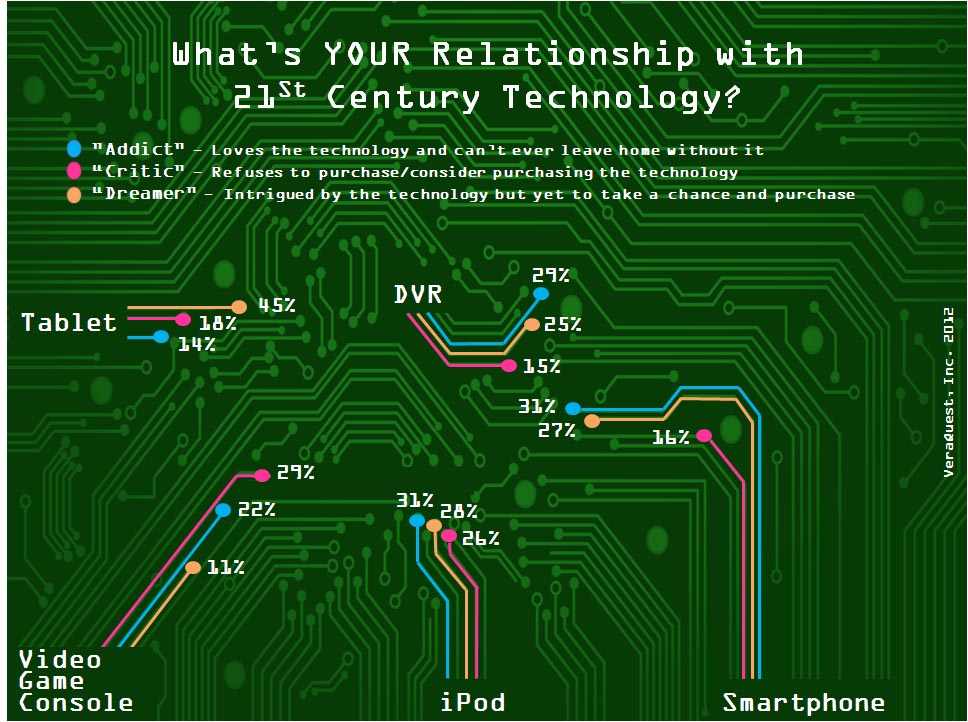This year has seen many events on the world stage (both tragic and joyous) that have survived longer – in my opinion – than they typically would have because our latest technology (i.e., social media, smartphones, tablets) has made it so much easier for us to communicate widely and quickly.
The Internet is the best example of this communication overload as 96% say we have access to it, and 75% say we love it and we can’t live without it.
But despite the leaps and bounds technology has made in the past decade, today a significant segment of our population identifies as tech-averse. This group seems to be holding out hope that inventions like the DVR, the smartphone, the iPod, the video game console and the tablet are just “fads” or nuisances in our daily lives, refusing to purchase or even consider purchasing any of the above items. We call this group the “critics” – which fits about one-fifth of our population (and even slightly more for the video game console and the iPod).
- It’s no surprise that this group is disproportionately comprised of seniors ages 65+.
Another segment of our population buys in hook, line and sync-er to whatever technology is coming down the pike. Also about one-fifth of our population (slightly more for the DVR and smartphone and slightly less for the tablet) loves loves LOVES the latest in technology and can’t ever leave home without it.
- Contrast this group with the “critics”, these “addicts” are more likely younger adults ages 18-29, more affluent adults and parents of kids under 18.
That said, most compelling to me is a third segment, what we title the “dreamers”. This group (a significant part of our population) feels intrigued by the latest inventions but has yet to take a chance and purchase. About one-quarter of our population (more for the tablet and less for the video game console), this group is a veritable goldmine for marketers – the low hanging fruit in marketing-speak because they are an already captivated (and affirming) audience that just needs to be persuaded to buy.
- The demographics of this group appear technology-dependent; in other words, the “dreamers” with respect to video game consoles look nothing like the ones for hybrid cars.
As years pass, the Dreamers in each of these categories will erode as these inventions become less state-of-the-art and more just part of the fabric of our technological culture – and perhaps instead they will become Dreamers for new technologies that have yet to be discovered. But how (if we are in the marketing or sales department of a tech firm), can we ensure that when dreamers evolve, they become “addicts” – not “critics”?

Leave a Reply